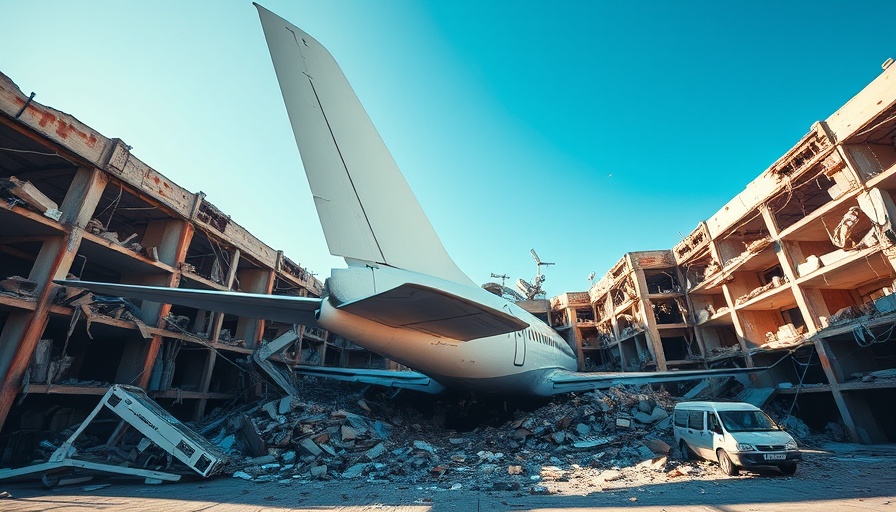
Tragic Crash Marks Aviation's Darkest Day
On a recent Thursday morning, tragedy struck as an Air India Boeing 787-8 Dreamliner crashed shortly after takeoff from Ahmedabad, India, claiming over 240 lives, making it a catastrophic event that deepens the scars of aviation history.
The flight, bound for London Gatwick, was carrying 242 passengers and crew when it collided with a college hostel packed with students enjoying lunch. A devastating scene unfolded, resulting in one of the world's deadliest aircraft disasters in a decade, another grim reminder of the inherent risks of air travel.
A Sole Survivor: A Glimmer of Hope Amid Darkness
Amidst the heart-wrenching loss, the sole survivor offers a poignant glimmer of hope. A British national of Indian descent, he is currently in hospital receiving treatment for his injuries. His survival amidst such chaos is a testament to resilience, although it also raises questions regarding the factors that contributed to the crash.
Seeking Answers: Investigations Launch
Following this tragic event, aviation authorities promptly initiated investigations to uncover the causes of the accident. The focus will inevitably center around pilot error, mechanical failure, and weather conditions. Each of these contributes significantly to aviation safety, raising the question: could this catastrophe have been prevented?
Public Reaction: A Wave of Grief and Anger
In the hours following the explosion, the nation and the international community were united in grief. Families of victims are in mourning, and the general public is demanding accountability from Air India and relevant authorities. The outcry for improved safety measures begs consideration: what needs to change in the aviation industry to prevent such tragedies?
Historical Context and Lessons Learned
Air travel has dramatically transformed over the decades, becoming safer due to technological advances and stringent regulations. However, this crash underscores that the infrastructure and safety measures must continually evolve. Looking back on previous disasters can provide invaluable insights for improving current protocols and preventing future loss of life.
Global Implications: A Wake-Up Call for Aviation Safety
This tragedy isn't just an Indian issue; it sends shockwaves through the global aviation industry. Airports and airlines across the world cannot afford to ignore the lessons gleaned from this disaster. A reassessment of safety protocols and emergency preparedness worldwide is imperative.
The Role of Government and Regulatory Bodies
Following the crash, scrutiny surrounding aviation regulations is mounting. Are current safety standards adequate, or do they require reevaluation? Governments must channel resources into enhancing safety measures proactively rather than reactively addressing tragedies.
Community Responses: Support for the Affected
As the nation grieves, communities are coming together, offering support to victims’ families and survivors. The resilience displayed speaks volumes about the human spirit in the face of unspeakable tragedy. Community-led vigils and support networks can play crucial roles in healing.
Final Thoughts: Moving Forward
As we process this devastating event, it is critical to reflect on the implications of aviation safety and the role we all play, as passengers and stakeholders. Recognizing risks is the first step towards preventing them. Only by advocating for enhanced safety measures and holding responsible parties accountable can we hope to prevent similar tragedies in the future.
 Add Row
Add Row  Add
Add 



Write A Comment